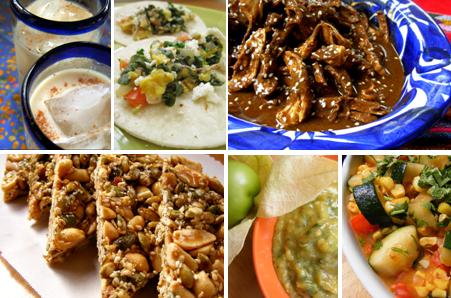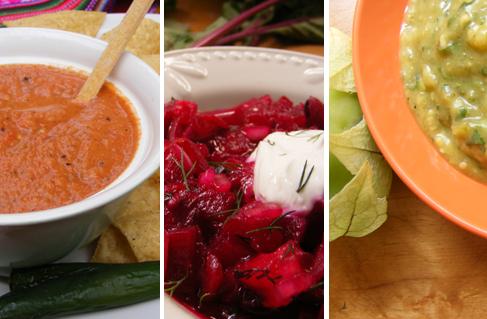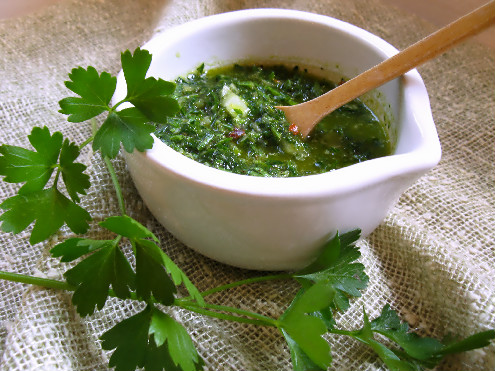Holiday: Splendiferous Cinco de Mayo Eats
Thursday, May 5th, 2011
Traditional and unsual Mexican eats on Fork Fingers Chopsticks: (top left, clockwise) horchata, purslane tacos, mole poblano, zucchini succotash, salsa verde with tomatillos and avocado, Mexican pumpkin seed peanut brittle.
Feliz Cinco de Mayo. For those not in the know, this Mexican holiday commemorates the country’s victory over the French in the Battle of Puebla on May 5, 1862.
Ironically, the day is celebrated more broadly in the U.S. than in Mexico (with the exception of the city of Puebla). Why? According to some academics, the impetus for American interest was the large number of Mexicans living in California during that time period. When they got word of the victory, they banded together to celebrate the success of their motherland.
Today, the holiday is less focused on the significance of the 1862 battle and is instead a general celebration of Mexican heritage and culture. Many Americans – whether of Mexican descent or not – now participate in Cinco de Mayo festivities.
Mexican eats . . .
In homage to my Mexican roots, I’m reminding you of the splendiferous Mexican eats on Fork Fingers Chopsticks. Yes, I said it . . . “splendiferous.” It’s my word of the week and perfectly describes the array of awesome recipes on my site.
I hope you prepare at least one of these dishes this Cinco de Mayo weekend. So far, the horchata recipe is the most sought after.
Which recipe is your favorite, whether you’ve made it or not?
Apps:
Mains:
- Easy Mole Poblano – this dish originated in Puebla
- Green Pozole
- Egg Purslane Tacos – Tacos de Verdolagas y Huevos
- Roasted Green Chile In Cream – Rajas Con Crema (perfect for veggie tacos or served over grilled meats)
- Beef & Cabbage Soup – Caldo de Res
- Easy Chicken Tortilla Soup
- Creamy Zucchini Corn Soup – Sopa de Calabacitas
Sides
- Zucchini Mexican Succotash – Calabacitas Con Elote
- Mexican Rice
- Mexican Brown Rice
- Lentil & Plantain Salad – Ensalada de Lentejas y Platanos
- Mexican Green Chile Cheese Grits/Polenta
Drinks & Sweets
- Mexican Hot Chocolate
- 5 ways to Make Horchata (including almond milk and espresso versions)
- Mexican Peanut Pumpkin Seed Peanut Brittle – Palanquetas
- Mexican Coconut Mango Popsicles – Paletas de Coco y Mango










